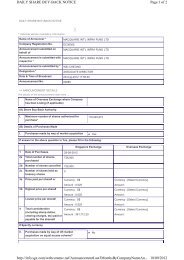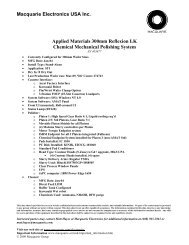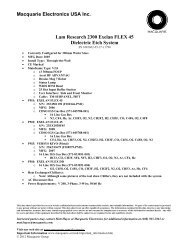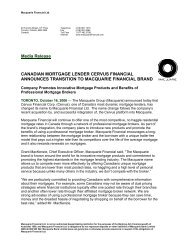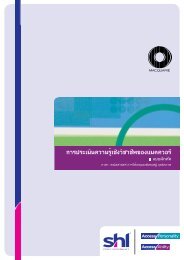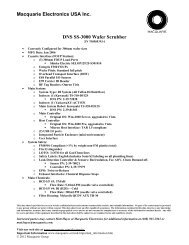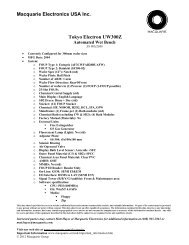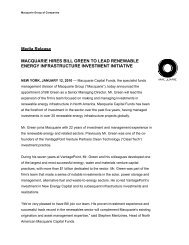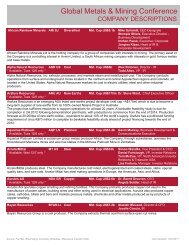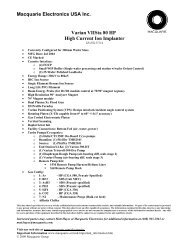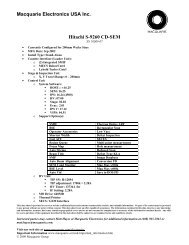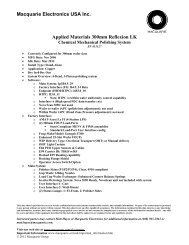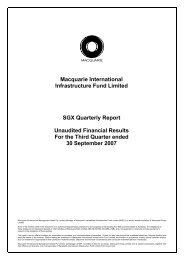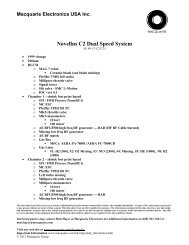macquarie global infrastructure total return fund annual report 2012
macquarie global infrastructure total return fund annual report 2012
macquarie global infrastructure total return fund annual report 2012
Create successful ePaper yourself
Turn your PDF publications into a flip-book with our unique Google optimized e-Paper software.
Notes to Financial Statements<br />
November 30, <strong>2012</strong><br />
20<br />
fair valuing the Fund’s investments,<br />
consideration is given to several<br />
factors, which may include, among<br />
others, the following:<br />
• the projected cash flows for the<br />
issuer;<br />
• the <strong>fund</strong>amental business data<br />
relating to the issuer;<br />
• an evaluation of the forces that<br />
influence the market in which these<br />
securities are purchased and sold;<br />
• the type, size and cost of holding;<br />
• the financial statements of the<br />
issuer;<br />
• the credit quality and cash flow of<br />
the issuer, based on the Manager’s<br />
or external analysis;<br />
• the information as to any<br />
transactions in or offers for<br />
the holding;<br />
• the price and extent of public<br />
trading in similar securities (or<br />
equity securities) of the issuer, or<br />
comparable companies;<br />
• the business prospects of<br />
the issuer/borrower, including<br />
any ability to obtain money or<br />
resources from a parent or affiliate<br />
and an assessment of the issuer’s<br />
or borrower’s management; and<br />
• the prospects for the issuer’s or<br />
borrower’s industry and multiples<br />
(of earnings and/or cash flow)<br />
being paid for similar businesses in<br />
that industry.<br />
Fair Value Measurements: The<br />
Fund discloses the classification of<br />
its fair value measurements following<br />
a three-tier hierarchy based on<br />
the inputs used to measure fair<br />
value. Inputs refer broadly to the<br />
assumptions that market participants<br />
would use in pricing the asset or<br />
liability, including assumptions about<br />
risk. Inputs may be observable or<br />
unobservable. Observable inputs<br />
reflect the assumptions market<br />
participants would use in pricing the<br />
asset or liability that are developed<br />
based on market data obtained<br />
from sources independent of the<br />
<strong>report</strong>ing entity. Unobservable inputs<br />
reflect the <strong>report</strong>ing entity’s own<br />
assumptions about the assumptions<br />
market participants would use in<br />
pricing the asset or liability that<br />
are developed based on the best<br />
information available.<br />
Various inputs are used in<br />
determining the value of the Fund’s<br />
investments as of the <strong>report</strong>ing<br />
period end. The designated input<br />
levels are not necessarily an<br />
indication of the risk or liquidity<br />
associated with these investments.<br />
When inputs used fall into different<br />
levels of the fair value hierarchy, the<br />
level in the hierarchy within which<br />
the fair value measurement falls is<br />
determined based on the lowest<br />
level input that is significant to the<br />
fair value measurement in its entirety.<br />
These inputs are categorized in the<br />
following hierarchy under applicable<br />
financial accounting standards:<br />
Level 1 – Unadjusted quoted prices<br />
in active markets for identical assets<br />
or liabilities that the Fund has the<br />
ability to access.<br />
Level 2 – Observable inputs other<br />
than quoted prices included in Level<br />
1 that are observable for the asset<br />
or liability, either directly or indirectly.<br />
These inputs may include quoted<br />
prices for the identical instrument



